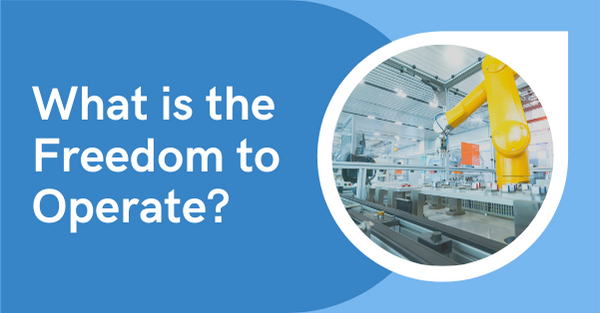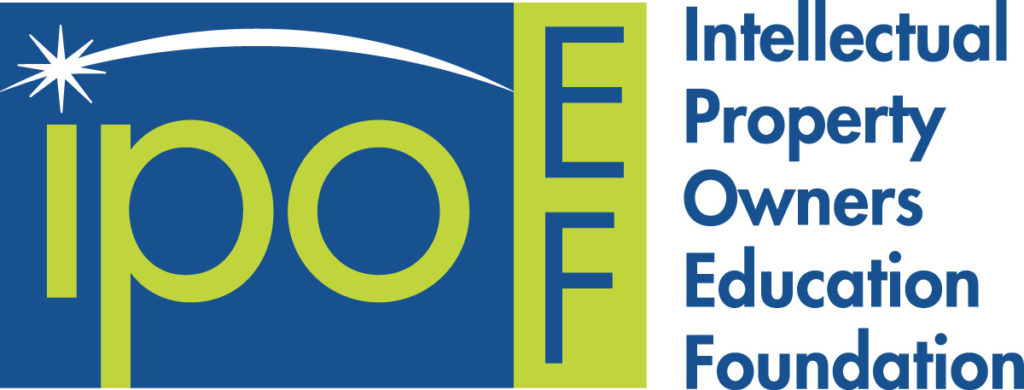By: The Michelson Institute for Intellectual Property
Executive Editor: Jon Wood, Assistant Professor, Harding University and Board Member, Intellectual Property Owners Education Foundation
Securing a patent for an invention is a key step toward protecting your intellectual property (IP) rights – as it gives you the right to exclude others from making, using or selling your invention and claiming it as their own. But before you market and sell a finished product, you should ensure you have the Freedom to Operate (FTO).
Without the FTO, you may not be able to make, use or sell your invention. The FTO is especially important in industries like:
- Biopharmaceuticals,
- Biotechnology,
- Manufacturing Industries
- Chemical products, and
- Companies entering foreign markets.
In this article, we explore common questions about the FTO. We’ll also provide examples of the FTO in action and share tips on conducting searches and mitigating risks.
Patentability vs. Freedom to Operate: What’s the Difference?
When you patent an invention, you obtain the right to exclude others from making, using, and selling your invention. Owning a patent enables you to sue others that infringe your patent rights/ A patent doesn’t protect you from getting sued for infringement of a patent owned by someone else, however.
Freedom to Operate Example: The Automotive Industry
To explain this distinction, it may help to consider a real-life example. The automotive industry is rapidly converging with the tech industry to create automated, self-driving vehicles chock full of high-tech inventions. While a tech company like Google may hold a patent for a specific software component necessary for a self-driving vehicle, there will inevitably be thousands of other patents involved in the vehicle’s final form (from automotive parts to infrared imaging systems). This means Google’s patent alone will not be sufficient for them to manufacture and sell automated vehicles unless they work with the other patent holders who have a stake in the final product. In this case, parties involved should consider Freedom to Operate.
If an automotive manufacturer uses Google’s patented technology without conducting a FTO analysis, they would be unknowingly infringing Google’s patent. The auto manufacturer would then be caught off guard if Google chose to sue for infringement, regardless of all the patents related to the vehicle that the auto manufacturer owns. The same could happen to Google if they used an automotive patent owned by the automotive company in the course of creating an autonomous vehicle. Conducting a FTO analysis allows you to identify potential infringement before investing significant amounts of money into a product, manufacturing facility or other related expenses. When both parties, e.g., Google and the auto manufacturer, own patents necessary to the autonomous vehicle, it is often best for Google, the automotive manufacturer and any other necessary patent holder to work together in order to secure the Freedom to Operate.
Additional FTO Examples
Of course, autonomous vehicles are not the only industry where multiple patent holders work together. In the biotechnology industry, Cohen and Boyer were well-known for holding a patent on recombinant DNA technology. Throughout the lifetime of the patent (which is only 20 years from the time you file it), 468 biotech companies had to license Cohen-Boyer’s technology to create products like recombinant insulin and a host of other biopharmaceuticals.
Cohen-Boyer’s broad licensing strategy displays one way companies can gain the Freedom to Operate: by licensing the IP needed to take their product to market. With this FTO method, the recombinant DNA patent-holder saw profits from their technology, as well as the companies who licensed the patent– everyone benefited including consumers! The genetic engineering community saw progress and forward momentum due to the inventors’ willingness to work together.
Another way companies secure the FTO is by cross-licensing entire portfolios of patents. In this case, all the companies have enough patents that other companies entering the market will inevitably infringe. Since it typically does not benefit patent-holders to start a war of mutual destruction, often the companies will not sue for infringement but rather work out an arrangement whereby entire portfolios of patents are licensed between the companies. This practice is referred to as cross-licensing. A cross-licensing strategy is common in industries where there are hundreds of thousands of patents related to each product, like smartphones or automobiles.
Conducting Freedom to Operate Analyses and Mitigating Risks
Naturally, most entrepreneurs and startups do not have the patent portfolios to cross-license with companies like Apple, Microsoft, and Google. But there are still ways to mitigate infringement risks.
First, conduct an FTO search (or analysis)
The best way to start an FTO search is by listing the countries where you anticipate making, using, selling, or importing your product. Patent laws vary by country, so there is not much use in searching for U.S. patents if you plan to bring your invention to China. Make sure you are very familiar with your product. You should thoroughly search the key aspects and major features of your product. This will help you identify other patent holders who may have rights to your product and interfere with your FTO. There are other ways to narrow the list of patents that relate to your product, such as checking the legal status of patents (recall from above patents typically expire 20 years from the filing date and if you don’t pay certain fees to keep the patent alive), so there is no need to worry about inactive patents).
It is important to conduct this type of analysis during your research and development (R&D) phase and continue them as your invention progresses, so that you don’t waste time developing a product that another party has rights to. Better yet, obtain a FTO opinion from an experienced patent lawyer for your processes that you use, and products that you make or sell.
FTO analyses should be ongoing
Each major stage of the process, from R&D to securing investments, often necessitates a new patent search and analysis. Additionally, if your company takes on liability for another product-line or company, such as in an acquisition, you may want to conduct an FTO search. This will depend on whether the company has continuously conducted such analysis prior to the merger or acquisition. The same goes in any event which you take on liability for making, using, selling or importing a product. This will help you stay ahead of potential infringement and ideally avoid lawsuits.
If you discover another patent that could limit your FTO, you should first seek the advice of an experienced patent lawyer. If you are concerned about the patent rights of another you have options. These include purchasing or licensing the patent rights, cross-licensing with the patent-holder to obtain the needed rights, or designing your product so that it does not infringe the patent, commonly referred to as designing around the patent.
Other Options
There are other options such as joining patent pools or aggregates. Here, patent-holders using similar or related technologies establish a sort of patent clearinghouse of shared patents. However, these arrangements are outside the scope of this article. Rest assured that obtaining the FTO is an issue that has been addressed for decades. As such, many creative ways to obtain the FTO have been developed. If you are concerned about the FTO you should see an experienced patent lawyer. They can determine if there is an issue and provide you with your alternatives. At the end of the day, the option that works best for you will depend on many factors. These include your industry, patent portfolio, and your goals for your invention.
Download the Free Infographic Below
_________
The Michelson Institute for Intellectual Property, an initiative of the Michelson 20MM Foundation, provides access to empowering IP education for budding inventors and entrepreneurs. Michelson 20MM was founded thanks to the generous support of renowned spinal surgeon Dr. Gary K. Michelson and Alya Michelson. To learn more, visit 20mm.org.



Trackbacks/Pingbacks